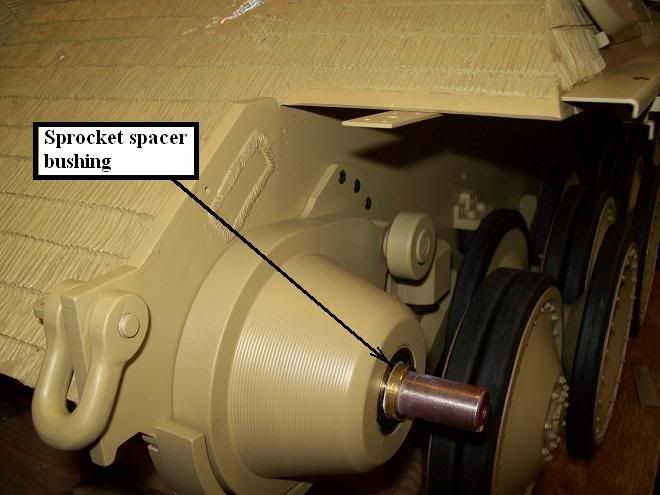Adrian,
I've used PTFE as a washer. It works ok, but is very soft and will be galled easily (but still function ok). Also thin PTFE will distort under pressure. It will probably work well as a washer behind the drive gear if you can hold it in place somehow. I use oil impregnated bronze or brass for all bearing washers etc. Another idea is the spacer you mention. Here is the sprocket spacer I used on the Panther and Sherman. It helps keep the sprocket the exact stand off distance required to the gear case. It should also help prevent the sprocket from grinding into the gear case. The Taperlock just slides up to this bushing -makes removing and reinstalling the sprocket easy and repeatable. The concept will also work without Taperlock bushings, just machine the bushing to touch the rear of the sprocket. As long as the sprocket is secured to the hub cap with M5 screw in center of drive gear spindle, the drive gear should not move side to side.
This bushing is made of brass, since it is not a bearing, it can be made from alum, steel, brass, plastic etc. So far it has worked well as keeping the sprocket spaced away from the gear case.


